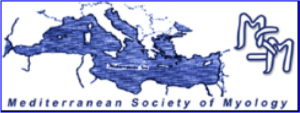Introduction. CMT4B2 is a rare subtype of CMT caused by pathogenic mutations in the myotubularin-related protein-13/set binding factor 2 (MTMR13/SBF2) gene. Nerve conduction velocities are markedly reduced and focally folded myelin sheaths are present on nerve biopsies. We presented two patients from two related Portuguese families with peripheral neuropathy caused by a novel mutation in the MTMR13/SBF2 gene.
Case report. Family 1: Patient 1: A 30-year-old woman, with disease onset in early childhood presented pes cavus and hammertoes and walked with a steppage gait. Muscle weakness was present distally, myotactic reflexes were abolished and sensory examination revealed a stocking and glove pattern of hypoesthesia to all sensory modalities.
Family 2: Patient 2: A 43-year-old man, second degree cousin of patient 1, born of a consanguineous marriage. At the age of 9 months, he was diagnosed with congenital glaucoma on the left eye, with progressive visual loss up to total blindness. He presented bilateral claw hand deformity, pes cavus and hammertoes and walked with a steppage gait. Myotactic reflexes were abolished and muscle weakness was severe distally in the upper and lower limbs. Sensory examination revealed a stocking and glove pattern of hypoesthesia to all modalities. In both patients electrodiagnostic studies evidenced an uniform and generalized sensorimotor demyelinating polyneuropathy and the molecular study found a frameshift/truncating homozygous novel mutation c.5073_5074del (p.Ser1692Tyrfs*42) in the MTMR13/SBF2 gene.
Conclusions. We report a novel mutation in the MTMR13/SBF2 gene associated with a classical CMT phenotype. Congenital glaucoma associated with a frameshift/truncating mutation in CMT4B2 is reported for the first time.






